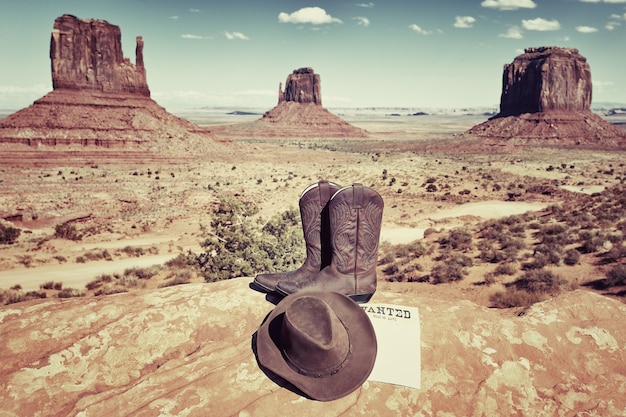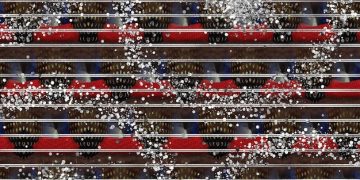The Role of Humor in US Culture: A Guide to American Wit

The multifaceted role of humor in US culture extends beyond mere entertainment, serving as a vital tool for social commentary, identity formation, and coping with adversity, deeply embedded in various aspects of American communication and cultural expression.
Ever wondered why Americans laugh at certain things, or how humor shapes their daily lives and societal perspectives? Exploring What Role Does Humor Play in US Culture? A Guide to Understanding American Wit reveals a nuanced landscape where jokes are far more than just punchlines. It’s a lens through which to comprehend American values, social dynamics, and even political discourse. This guide delves into the distinctive features and pervasive influence of humor in the United States, offering insights into its diverse forms and functions.
The Foundations of American Humor: From Puns to Parody
American humor, rich and varied, draws from a diverse palette, encompassing everything from simple wordplay to complex satirical narratives. Its roots are deeply intertwined with the nation’s history, reflecting evolving social norms, technological advancements, and collective experiences.
Early American humor often stemmed from oral traditions, folk tales, and regional quirks. As the nation expanded, so did its comedic expressions, adapting to new challenges and opportunities. From the exaggerated tall tales of the frontier to the biting political cartoons of urban newspapers, humor has consistently served as both a reflection and a critique of society.
Historical evolution of comedic forms
Understanding the historical progression of American humor helps decode its contemporary manifestations. Each era contributed unique comedic styles that fused into today’s eclectic mix.
- Vaudeville and Minstrel Shows: These early forms, despite their problematic elements by modern standards, popularized slapstick, character-driven comedy, and musical humor, setting the stage for later comedic genres.
- Radio and Early Television: The advent of these technologies brought stand-up comedy and sitcoms into millions of homes, refining joke structures and fostering national comedic sensibilities.
- The Rise of Satire and Stand-up: Post-war prosperity and social upheaval fueled a golden age of observational humor and political satire, challenging conventions and fostering critical thought.
The progression of American humor mirrors the nation’s diverse socio-political journey. From the innocence of early sitcoms to the complex, often dark, humor of contemporary streaming series, the evolution is evident. This constant adaptation ensures humor remains relevant and resonant, continually reflecting the changing cultural landscape.
Moreover, the influence of immigration has significantly shaped American humor. Each wave of immigrants brought distinct comedic traditions, blending them with existing forms to create new, vibrant expressions. This multicultural tapestry is now a defining characteristic of American comedy, offering a truly global perspective on wit.
Humor as a Social Lubricant: Bridging Divides and Building Connections
Humor in the US isn’t just about amusement; it’s a powerful social tool, acting as a lubricant in everyday interactions. It helps diffuse tension, break the ice, and foster connections in various settings, from casual conversations to professional environments.
Americans often use humor to establish rapport, signal likability, and create a shared understanding. A well-timed joke can transform an awkward silence into comfortable camaraderie, making interactions smoother and more enjoyable. This function is particularly evident in new social situations where common ground is yet to be established.

The role of self-deprecating humor
Self-deprecating humor, a common feature in American wit, involves making jokes at one’s own expense. This style often makes individuals appear more approachable and humble, fostering empathy and connection.
- Relatability: When someone pokes fun at their own flaws or missteps, it makes them more human and relatable to others, signaling that they don’t take themselves too seriously.
- Diffusing Arrogance: It serves as an antidote to perceived arrogance, demonstrating a willingness to be vulnerable and open amongst peers or even in public forums.
- Building Trust: By admitting a weakness or an amusing mistake, individuals can build trust, showing they are not afraid to be seen as imperfect, which encourages others to relax their guard.
This form of humor is particularly effective in American corporate cultures and social gatherings. It helps dismantle hierarchies and promotes a more egalitarian atmosphere, even if only momentarily. Moreover, it serves as a coping mechanism, allowing individuals to laugh off their own challenges or embarrassing moments, thereby reducing stress and anxiety.
Beyond individual interactions, humor also plays a vital role in group cohesion. Shared laughter can strengthen bonds within families, communities, and even nations. It creates a sense of belonging and collective identity, reinforcing the idea that “we are all in this together,” regardless of individual differences. This collective experience of humor is a powerful force for social integration and understanding, often smoothing over minor disagreements and fostering a sense of unity.
Humor in Politics and Social Commentary: The Jester’s Role
In the United States, humor has long served as a potent instrument for political and social commentary. Comedians often act as modern-day jesters, holding a mirror to society’s absurdities and challenging established power structures. This tradition of using wit to address serious issues is deeply ingrained in American media and public discourse.
From late-night talk shows to satirical news programs, comedic outlets provide a platform for critiquing government policies, exposing hypocrisy, and fostering critical thinking among the public. They often achieve what traditional journalism sometimes struggles with: making complex issues accessible and engaging to a broad audience, encouraging dialogue, and sometimes even inspiring action.
Satire and its impact on public opinion
Satire, a sophisticated form of humor, uses irony, exaggeration, or ridicule to expose and criticize people’s stupidity or vices. In the American context, political satire is particularly pervasive and influential.
It can shape public opinion by framing narratives, highlighting inconsistencies, and challenging conventional wisdom without being overtly accusatory. Shows like “Saturday Night Live’s” “Weekend Update” or “The Daily Show” have become important sources of political analysis for many Americans, often more trusted than traditional news sources among younger demographics.
The jester’s role in American politics is not merely to entertain but also to provoke contemplation, offering an alternative perspective that often resonates more deeply than direct criticism. By packaging social critiques in humor, comedians can circumvent defensive reactions, allowing messages to penetrate more effectively. This subtle yet powerful influence makes humor an indispensable part of the American democratic process, enabling uncomfortable truths to be aired in a digestible format.
Moreover, humor in social commentary often acts as a barometer of societal health. The ability to laugh at one’s own challenges or national flaws can indicate resilience and a capacity for self-reflection. When humor becomes suppressed or its targets become off-limits, it can signal a closing of democratic spaces. Therefore, the vibrant and often irreverent nature of American political humor is a testament to its commitment to free speech and open debate, even when those debates are uncomfortable or controversial, providing an essential check on power.
Regional Variations and Cultural Nuances of American Humor
Just as the United States is a diverse nation, its humor also exhibits significant regional variations and cultural nuances. The vast geography and the varied historical and demographic makeup of different regions contribute to distinct comedic sensibilities. Understanding these differences is key to fully appreciating the tapestry of American wit.
For instance, humor in the South often incorporates storytelling, self-deprecation, and a slower, more deliberate pacing, reflecting a culture that values hospitality and conversational artistry. In contrast, East Coast humor, particularly from cities like New York, tends to be faster-paced, more observational, and often more cynical or edgy, mirroring the rapid-fire conversations and urban anxieties of its denizens.

The impact of diverse subcultures
Beyond geographical regions, various subcultures within the US contribute their unique flavors to the broader comedic landscape. African American humor, for example, often incorporates elements of satire, storytelling, and a masterful use of language, deeply rooted in historical experiences and oral traditions.
- New York vs. Los Angeles: New York humor often features rapid-fire delivery and cynical observations, reflecting the city’s fast pace. Los Angeles humor, meanwhile, is often more industry-focused, with a lighter, sometimes self-referential tone related to the entertainment world.
- Midwestern Charm: Humor in the Midwest tends to be more wholesome and relatable, often focusing on everyday life and community, with less emphasis on sharp edges or controversy.
- Southern Storytelling: Southern humor relies heavily on narrative, often with a leisurely pace, allowing the listener to savor the buildup to a punchline, blending warmth with gentle teasing.
These subcultural comedic forms are not static but evolve, influencing and being influenced by mainstream humor. For example, stand-up comedy, a quintessentially American form, has historically been a melting pot where diverse voices bring their unique cultural perspectives and comedic styles to a national audience. This constant cross-pollination ensures that American humor remains dynamic and reflective of its ever-changing demographic landscape, enriching the national dialogue.
The internet and social media have further amplified these regional and subcultural humor trends. Memes, viral videos, and online communities allow niche comedic styles to find broader audiences, creating new avenues for shared laughter and cultural exchange. This digital proliferation means that what once might have been a regional inside joke can quickly become a national phenomenon, further blurring the lines whilst celebrating the unique expressions of American wit, reflecting a society that revels in its multifaceted identity and diverse comedic expressions.
Humor as a Coping Mechanism: Navigating Adversity with a Smile
For many Americans, humor serves as more than just a source of entertainment; it’s a vital coping mechanism for navigating adversity, stress, and even tragedy. In a culture that often values resilience and optimism, finding something to laugh about—even in dire circumstances—can be a powerful way to process difficult emotions and maintain perspective.
This is evident in how people often resort to dark humor or gallows humor in professions like law enforcement or emergency medicine, where daily exposure to challenging situations necessitates a psychological release. It’s not about disrespecting the gravity of events but about creating a necessary emotional distance to continue functioning.
The therapeutic benefits of shared laughter
Shared laughter, in particular, offers significant therapeutic benefits, fostering a sense of community and reducing feelings of isolation during tough times. When individuals laugh together about a shared difficulty, it reinforces the idea that they are not alone in their struggles.
- Stress Reduction: Laughter triggers the release of endorphins, enhancing mood and temporarily alleviating physical pain, providing a natural stress reliever.
- Emotional Release: Humor can be a healthy outlet for pent-up emotions, allowing individuals to express sadness, anger, or frustration in a less confrontational manner.
- Building Resilience: By finding humor in adversity, individuals develop a more resilient mindset, learning to adapt and overcome challenges with a sense of perspective and optimism.
Moreover, humor can be a powerful tool for processing collective trauma. After national tragedies, comedians often step forward to provide not just comic relief but also a shared space for collective mourning and healing. Their ability to articulate national feelings, even through a comedic lens, helps people make sense of the incomprehensible and move forward.
This cultural emphasis on finding humor in challenging situations is a testament to the American spirit of perseverance. It illustrates a collective belief that while life presents its difficulties, maintaining a sense of humor is crucial for well-being and recovery. In this way, humor transcends its role as entertainment, becoming a fundamental aspect of psychological fortitude for many Americans, underpinning a resilient attitude towards life’s unpredictable challenges, and continually reminding everyone that even in the darkest moments, there is often a glimmer of light to be found through a shared laugh.
The Future of American Humor: Trends and Challenges
The landscape of American humor is ever-evolving, constantly shaped by technological advancements, shifts in societal norms, and new generations of comedic voices. The future promises a dynamic interplay of established traditions and emerging trends, presenting both exciting opportunities and significant challenges for comedians and audiences alike.
Digital platforms, in particular, have democratized comedy, allowing content creators to bypass traditional gatekeepers and reach global audiences directly. This has led to an explosion of diverse comedic content, from short-form videos on TikTok to independent podcasts and web series, each carving out its own niche and influencing broader trends.
The influence of digital media and shifting sensibilities
The internet has profoundly transformed how humor is created, consumed, and disseminated in the US. Social media platforms have given rise to new comedic formats, such as memes and viral challenges, which spread rapidly and reflect contemporary cultural anxieties and trends.
- Democratization of Content: Anyone with an internet connection can become a comedian, leading to an unprecedented diversity of voices and perspectives in humor.
- Niche Communities: Online platforms foster niche comedic communities, allowing very specific interests and experiences to form the basis of humor for dedicated audiences.
- Instant Feedback Loops: Digital media provides direct and immediate feedback from audiences, which can either foster rapid evolution of comedic styles or lead to sensitivity about content.
However, this accessibility also presents challenges, particularly concerning cancel culture and the increasing scrutiny of comedic content. As societal sensibilities shift, what was once considered harmless humor might now be deemed offensive, leading to debates about freedom of speech versus social responsibility. Comedians are increasingly navigating a delicate balance between pushing boundaries and respecting community standards, a tension that will likely continue to shape the evolution of humor. This constant negotiation reflects a broader cultural conversation about identity, inclusivity, and the limits of expression, particularly in a hyper-connected world.
Furthermore, the rise of artificial intelligence also poses interesting questions for the future of humor. While AI-generated jokes are still often rudimentary, the potential for AI to assist in comedic writing or even generate new forms of humor is a nascent but intriguing development. As technology continues to advance, the boundaries of what constitutes humor and who can create it are likely to be redefined, leading to an even more complex and fascinating comedic landscape in the years to come, reflecting a perpetual quest for new ways to make people laugh, even in the face of evolving ethical and technological considerations.
| Key Aspect | Brief Description |
|---|---|
| 🎭 Cultural Mirror | Humor reflects and critiques American society, values, and evolving norms. |
| 🤝 Social Connector | Used to build rapport, ease tension, and foster community connections. |
| 📣 Political Commentary | Serves as a powerful tool for satire and social critique, particularly in media. |
| 🛡️ Coping Mechanism | Helps individuals and groups navigate stress, adversity, and trauma. |
Frequently Asked Questions About American Humor
▼
Self-deprecating humor is frequently used in the US as it makes individuals appear more approachable and humble. It signals a willingness to be vulnerable, fostering relatability and trust, effectively diffusing perceived arrogance, and enhancing social connections in various settings, from casual to professional.
▼
Humor, especially satire, plays a significant role in US politics by critiquing policies and exposing hypocrisy. Comedic shows often serve as informal news sources, making complex political issues accessible and fostering critical thinking among the public, influencing opinions without direct accusation.
▼
Yes, significant regional differences exist. Southern humor often features storytelling and a slower pace, while East Coast humor can be faster, more cynical, and observational. Midwestern humor tends to be more wholesome and relatable to everyday life, reflecting diverse cultural nuances.
▼
Digital media has democratized humor, allowing diverse voices to create and share content globally. Platforms like TikTok and YouTube have popularized new formats such as memes and viral videos, while also introducing challenges related to evolving social sensibilities and “cancel culture.”
▼
Absolutely. Humor acts as a vital coping mechanism for Americans dealing with stress, adversity, and even tragedy. Shared laughter, in particular, offers therapeutic benefits by reducing stress, facilitating emotional release, and building resilience, helping individuals process difficult experiences.
Conclusion
Understanding the intricate role of humor in US culture reveals it as a multifaceted phenomenon, extending far beyond simple entertainment. From its historical roots in diverse comedic forms to its contemporary presence across digital platforms, American humor serves as a crucial social lubricant, a powerful tool for political and social commentary, and a vital coping mechanism for individuals and communities facing adversity. Its regional variations and cultural nuances further highlight the rich tapestry of American wit, reflecting a society constantly evolving and finding new ways to laugh, reflect, and connect. The ongoing trends and challenges, particularly with digital media and shifting sensibilities, underscore humor’s dynamic and essential contribution to the American way of life, continually shaping its identity and collective expressions.





